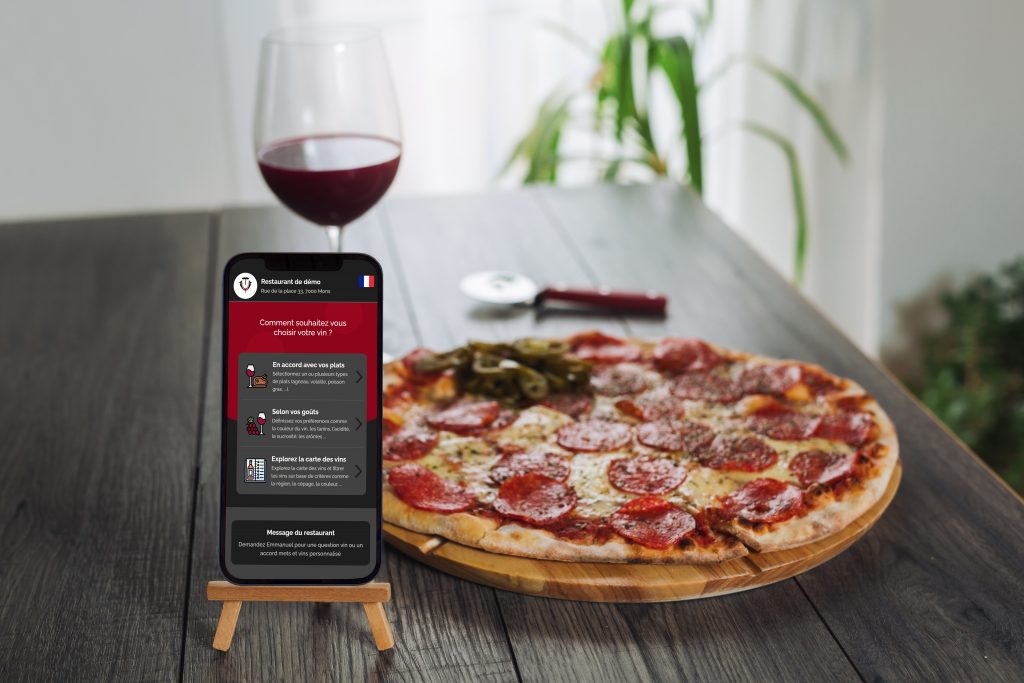
Are you a restaurateur looking to create or update your wine list? Or do you simply want to know the rules for constructing a wine list? We provide you with all the tips and tricks to create a balanced, readable, and compliant wine list.
To be compliant with the law, your wine list must necessarily include: prices, the commercial names of the wines, and the quantities served.
The law requires you to indicate the following:
Here are the 3 points you must comply with when you start creating your list; when creating your wine list with Winevizer, this information is mandatory.
The vintage should ideally be displayed on the list to inform the customer of the vintage being tasted, and it must correspond to the bottle presented.
Different labels such as Organic, Demeter, or Vegan can also be displayed on the list to satisfy certain customers who pay attention to these details.
Just as your cuisine evolves with the seasons, adapt your wines according to the menus offered in your restaurant and the season. Certain types of wines pair more easily with certain dishes. For example, offer fresher and lighter wines with cold dishes in spring and summer, or more powerful and tannic wines with stews in winter.
You can use the Winevizer feature "favorite" or "featured wine" to highlight a wine that pairs perfectly with the day's weather or current wine trends.
Many customers are keen to taste local wines at restaurants, especially in tourist areas. Try, if possible, to always offer local wines or those produced in nearby wine regions.
Look for suppliers such as estates or cooperatives that can offer you local wines and products. Wine merchants are also allies in your search for local wines.
If your cuisine is characteristic of a particular country, such as an Italian or Spanish restaurant, then try to offer wines from those countries.
If you wish to maintain a traditional paper wine list (rather than creating a digital wine list), try to follow a few rules:
Regardless of the size of the wine list, the important thing is its balance and coherence. The customer should be able to easily find what they are looking for and pair it with their menu.
The list should provide a good overview of different regions with well-known appellations as well as more confidential or local appellations. A diverse list can cater to both classic and curious customers.
The grape varieties are also important and should be varied in the wines offered. This will simplify food and wine pairings.
The styles of wines should also be considered for each color of wine. It will be interesting to offer light and fruity wines as well as powerful and tannic ones, or even balanced and complex wines.
Finally, the prices of the wines should be in harmony with your menus. If you offer low-priced menus like lunches, low-priced wines should accompany the meal, just as for a higher-end menu, beautiful, more expensive cuvées should be offered. Wine selections can also be a good way to introduce your wines.
One might think that a wine list with many references will please everyone, but it tends to complicate the task for the customer as well as for the restaurateur in managing stock and cellar.
It is often observed that on a crowded list, it is usually the price that influences the customer, while a more limited list allows the customer to be more curious about their choice. A customer faced with too wide a choice might end up frustrated or lost and ultimately not order any wine at all. Also discover how to easily choose your wine at the restaurant.
Some customers may refrain from ordering a whole bottle for various reasons: drinking alone, price, or not wanting to spend the entire meal with the same wine. Wines by the glass are therefore a good way to make a wine sale. However, be careful not to offer too many wines by the glass if you do not have a suitable system to preserve the bottle for several days without altering the wine.
Selling wine by the glass also allows customers to try new wines or discover more confidential wines that they would not order by the bottle without knowing them.
Rather than simply displaying the name of the wine, its estate, and its appellation, why not include a small tasting note that helps the customer get an idea of the wine's profile?
Leaving a tasting note that briefly discusses the visual, aromas, flavors, and pairings for each wine is a good way to show your customers that you master your wine list.
The classification of wines on the list should also be well thought out. There are two good ways to classify your wines.
A final sorting can then be done by price or alphabetically, but this should not be the main sorting factor.
A good list should be renewed and not remain static. Regular customers might get tired of the selection of wines.
Let your list evolve, for example, according to the seasons but also based on changes in your menu. Part of your list can remain static while another part changes regularly, which will satisfy all customers in general. Evolving your selection of wines by the glass can also be a simpler way to refresh your list.
One does not necessarily exclude the other. A digital wine list will be much more flexible, easier to update, and more engaging for your customers. However, the paper list remains essential for some customers, and you certainly cannot do without it. Offering your digital list on tablets can be a good compromise.

Pendant 1 mois sans engagement